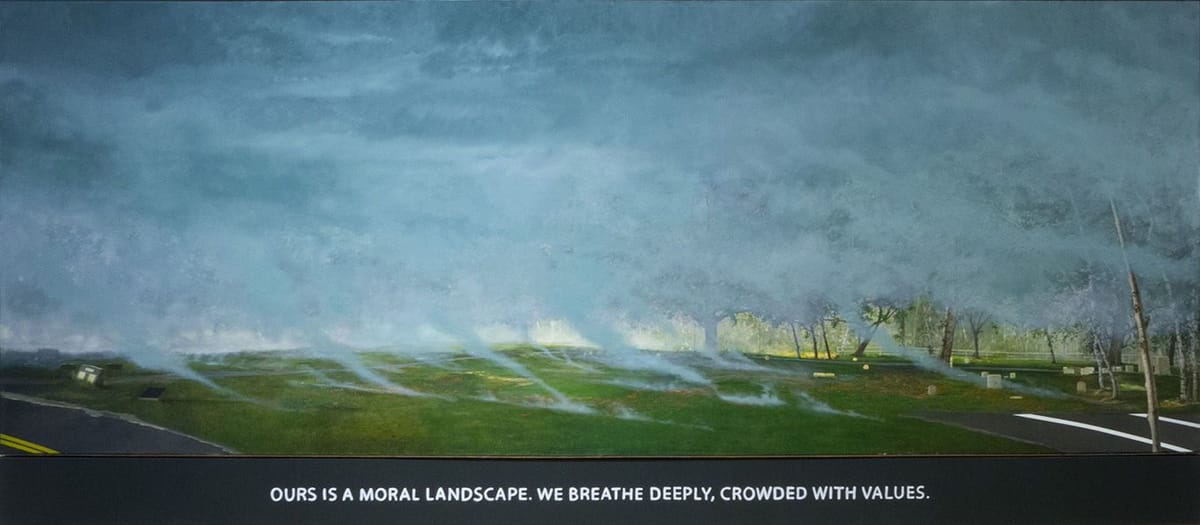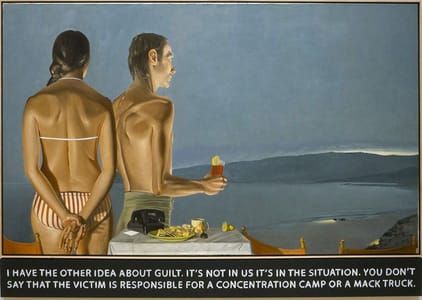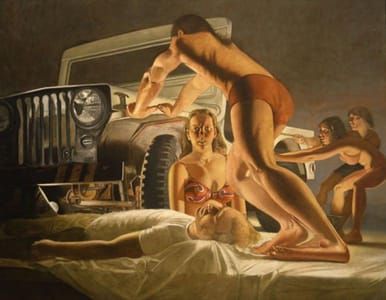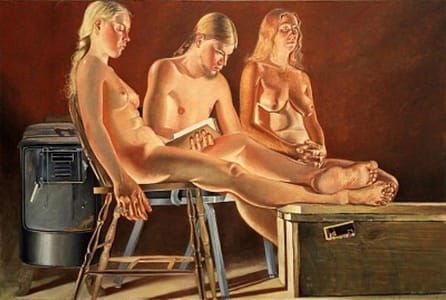

The Killing Cycle, 1966
Alfred Leslie
The year 1966 was a turning point for painter and filmmaker Alfred Leslie. That fall, a devastating fire destroyed Leslie’s studio-home and all of its contents. This personal loss, as well as the death only a few months earlier of his close friend and collaborator, poet Frank O’Hara, provided fertile ground for artistic inspiration. The Killing Cycle is a series of constructed narratives that synthesize fact and fiction to describe the beach scene car crash that ended O’Hara’s life. Part personal testimony and part metaphor for loss, these “painted stories” will be exhibited together for the first time in over 20 years.
(http://www.marquette.edu/haggerty/killing-cycle.php)
Around 1964, during Leslie's filmmaking days as an artist, he collaborated with one of the kingpins of the Abstract Expressionist movement, the writer and poet, Frank O'Hara, who also happened to be a curator at New York's Museum of Modern Art. The film was titled The Last Clean Shirt. O'Hara wrote the narration. Just two years later, in the early morning hours of July 24, 1966, while walking with friends on Fire Island, O'Hara was hit by a Jeep. He died the next day of a ruptured liver. The tragic episode became the subject for Leslie's most important figural works, "The Killing Cycle." A few years later (1969-70), in a series of nine paintings, Leslie harnessed all his talents and instincts for an in-depth look at not just the Killing of Frank O'Hara, but the meaning of the man's life and death. Although some of the works have a narrative element, some even featuring a written narration at the bottom, the series does not lend itself to a simple interpretive reading. In some respects, the series is as abstract, in its reasoning if not its images, as anything Alfred Leslie splashed together during his years striving to be more extreme than his extreme New York School colleagues working in the lofts next door.
(http://art-now-and-then.blogspot.nl/2014/12/alfred-leslie.html)
© 1966 Alfred Leslie
Alfred Leslie
artistArthur
coming soon




